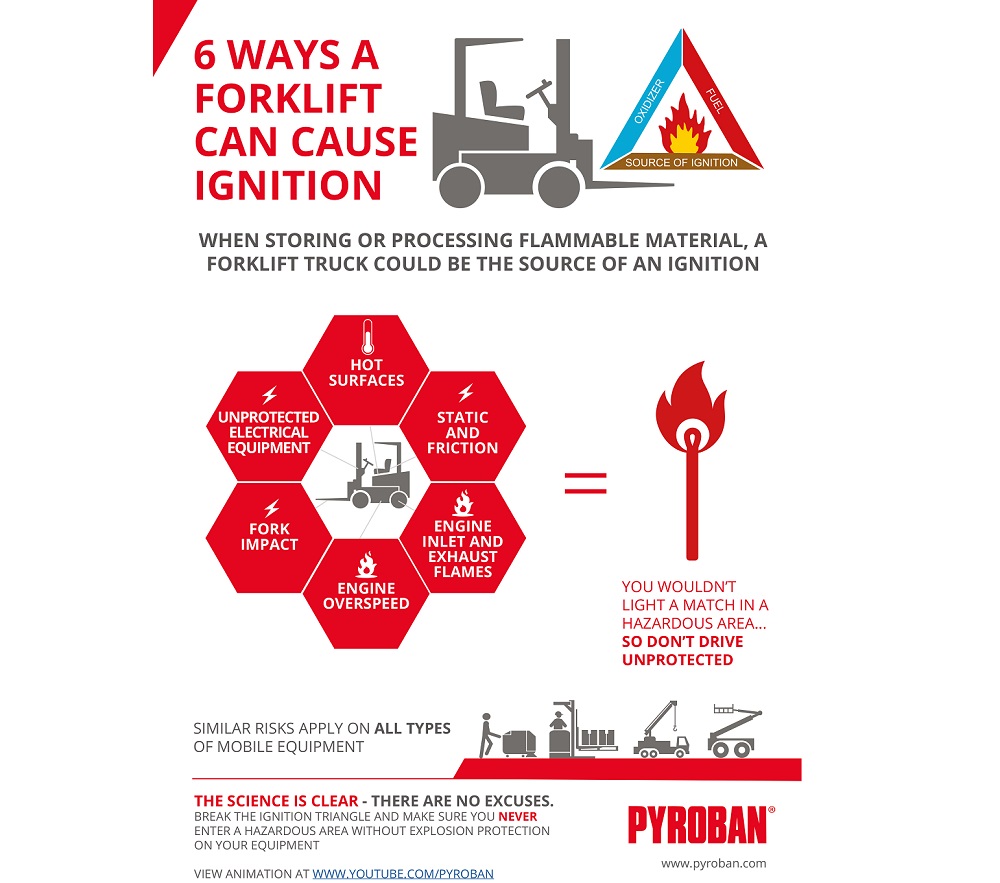Six ways a forklift can cause an explosion in a hazardous area
23rd December 2015

Pyroban has issued an infographic explaining how a standard forklift could cause an explosion in a hazardous area. The safety company says that it is in response to seeing a number of European facilities operating unprotected forklifts in potentially explosive atmospheres.
We want to remind forklift users and suppliers about the basic science of an explosion. It is an unavoidable fact that a standard forklift has multiple sources of ignition and will complete the ignition triangle, says Terry Andrews, Sales Manager Europe and North Africa, Pyroban Group. Taking an unprotected forklift into a potentially explosive atmosphere where flammable material is processed or stored, poses a business risk which could cause a serious industrial accident.
The infographic shows six ways that a forklift could cause an explosion.
1) Unprotected electrical equipment
One small spark can ignite an explosive atmosphere. This can be from one of numerous electric sparks and arcs found on many forklift components.
2) Hot surfaces
Heat can ignite an explosive atmosphere. The engine, motors, brakes and other components can all get hot in normal operation or fault condition.
3) Static and friction
Static build up and friction can create enough energy to cause ignition. There are many possible sources on a forklift truck including the seat and tyres.
4) Engine Overspeed
If flammable gas or vapour is present in the atmosphere, the internal combustion engine can ingest the flammable atmosphere which can cause overspeed.
Gas or vapour mixed with air and diesel fuel can lead to the engine running out of control at elevated speed. This overspeed can result in catastrophic failure of the engine.
5) Engine inlet and exhaust flames
Overspeed can also lead to flashbacks through the inlet or backfires in the exhaust which could ignite the surrounding atmosphere.
6) Fork impact
If the forks strike another surface, they can create (mechanical) sparks with enough energy to cause ignition of an explosive atmosphere.
Compared to a lighted match, there are so many more ways an unprotected forklift could cause an explosion, Terry confirms. We frequently see businesses who are unwittingly letting forklifts and other equipment such as cranes, access platforms and scrubber driers operate freely.
Pyroban is a safety company that converts all types and brands of forklifts so that they cannot cause an explosion and are safe and compliant (ATEX 94/9/EC) for operation in potentially explosive atmospheres.

